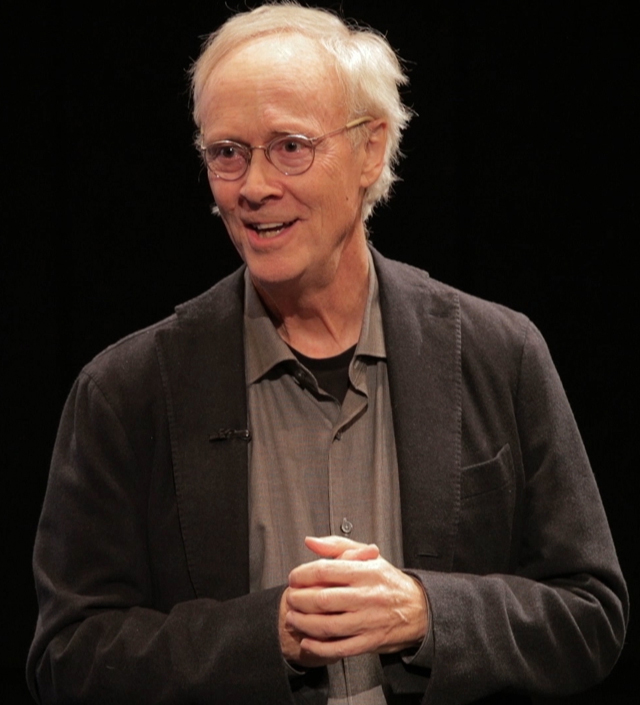Editor’s Note: Rethinking65 periodically runs articles on retirement costs, including housing and other expenses, in different areas. Advisors interested in being interviewed for this feature may contact Editorial Director Jerilyn Klein.
The fifth largest city on the West Coast, Seattle is situated between the saltwater Puget Sound and Lake Washington. A bustling city with impressive cultural attractions and a major university, Seattle is framed by majestic mountain ranges and a temperate climate that invites hiking, boating, biking and camping all year.
“It’s a wonderful place for retirees and for those who aren’t retired, if you can resolve the housing nut,’’ said Rick Bryan, CFP, and vice president/partner with EP Wealth Advisors, Seattle.
By nut, Bryan means a dramatic increase in the cost of owning a single-family home, precipitated by Amazon, Microsoft, Apple, Facebook and Starbucks being based in the city.
Housing in the core of Seattle has been gobbled up by these companies’ well-paid workers in analytics, marketing and web services. Numbeo.com estimates that the average monthly salary in Seattle is $5,973 net (after taxes) or about $72,000 yearly. The U.S. Census Bureau lists the annual real median personal income in the United States at $35,977 in 2019.
A house near the core of the city that would have cost $100,000 to $200,000 in the 1990s is now in the $700,000 range, and would likely be a fixer-upper, Bryan said.
“Even Amazon can’t afford to have warehouses in downtown Seattle, so they are way south of the city,’’ Bryan said.
How expensive is expensive? Retirees with $500,000 nest eggs, and the average Social Security payment of about $19,000 yearly, could live comfortably in Seattle in a one-bedroom apartment, Bryan said. That puts the cost of living in Seattle, once a haven for blue-collar workers as well as white collar ones, on a par with Boston, and that spike happened over a span of fewer than 25 years.
Property taxes, calculated at about 1% of appraised value, can be substantial when the median house price is $800,000.
“With a $500,000 diversified portfolio, you are probably looking at income generation of $17,000 to $23,000 a year, dependent on market conditions. The average Social Security recipient gets a little bit less than $19,000 per year. So the income is in the high 30s to a bit below $40,000.
“If we span beyond Seattle, all the way out to Bellingham, or all the way down to Olympia, in that broad expanse, with a $500,000 income and a second income, it’s not conceivable, even if they are frugal, to pull off owning (single-family home) housing.’’
Bellingham is about 88 miles north of Seattle or about 90 minutes by car; Olympia is 60 miles southwest of the city, or about an 80-minute drive.
What $1,800 Will Get You
Those $500,000 nest eggers who are determined to retire in Seattle would probably wind up renting a one-bedroom apartment at $1,800 to $2,000 a month, Bryan said.
“To find anything less than that would be in less desirable neighborhoods in older buildings and with less public transportation. Meaning, you would be stuck with a car, which adds to the budget burden.’’
Apartments.com lists First Hill rental apartments ranging from $999 to $3,300; rental apartments in the University District are available for from $1,169 to $2,242, and The Century in Queen Anne has apartment rentals from $2,008 to $6,102.
Another option is Bellevue, 10 miles east of Seattle over Lake Washington — a vibrant small city with a crafts and design museum, a children’s museum, a major public park and a botanical garden.
Zillow.com features Bellevue houses such as a 1,390-square-foot ranch at $775,000; a five-bedroom 2,660 square house listed at $950,000 and a 2,120 square foot house listed at $1.1 million.
A handful of appealing Seattle neighborhoods in the city’s core include Queen Anne, within hailing distance of the World’s Fair Space Needle and busy with shops and cafes, Seattle Opera and 19th century homes. North of Queen Anne is waterfront Ballard, with trendy restaurants, breweries and a beach near Ballard Locks. East of Ballard is Capitol Hill, with small shops and boutiques, gay clubs, walking trails and a plant conservatory.
Southeast of Capitol Hill is First Hill, a neighborhood of mansions, hospital networks, the famous Pike Place market, Frye Art Museum, the Seattle Symphony and the central branch of the Seattle Public Library.
In the north of Seattle’s core is University District, home of the University of Washington, with a farmer’s market, art galleries, natural history museum and international cuisine restaurants.
The Cost of Core Housing
Realtor.com lists a Queen Anne 1,087-square-foot high-rise condo for $585,000, and a 1,420-square-foot single-family home for $1,089,500. In Ballard, Trulia.com lists a 1,040 square foot house for $799,000 and a 1,934 home for $1.4 million.
Zillow.com lists a 2,000-square-foot house in First Hill at $750,000 and a 1,860-square-foot house for $1,080,000.
Bryan lives in Normandy Park, about 14 miles south of downtown Seattle. The value of his single-family home has ascended to a point that he calls “bonkers; it’s just irrational.”
“The house that I live in is valued at $700,000; it’s not in Seattle proper but it‘s fairly close. I do have views of the Sound, and in three years, it’s appreciated in value from $250,000 to what it is now. It’s a rambler; nothing special. It’s in an interesting neighborhood, but it’s not an interesting house. It’s on one level, about 1,800 square feet, with a nice-sized lot,’’ Bryan said.
Bryan once kept a 27-foot sailboat nearby; boating is a major attraction in Puget Sound, where the winds are consistent but light.
Housing for $1 million Nest Eggers
The $1 million nest egger could afford a single-family house downtown in the 1,500- to 2,000-square-foot range, in ready-to-move-in condition, Bryan said. “Or you could find a fixer-upper for $700,000 to $800,000 in a little less desirable neighborhood with a slightly longer commute,’’ he said.
Luxury homes abound in the core of Seattle. Seattle Magazine features a 1910 mansion set high in Capitol Hill for $15 million; it has 11,000 square feet and seven bathrooms, with a rooftop terrace that overlooks Puget Sound.
But as Bryan said, there is a price to be paid for expensive housing.
“We don’t have income tax in Washington State and that sounds like a gold deal for retirees, but the rub is that all of the other taxes are fairly regressive to make up for no income tax.’’
The farther from the core, the “less public’’ the transportation is, Bryan said. Link Light Rail covers north Seattle, including the University District, to downtown Seattle and the Seattle Airport, about 14 miles away.
King County Metro Transit runs buses throughout the city. Daily or monthly discount passes, for up to 66 percent savings, are available to seniors and can be used on rail, bus, the water taxi, monorail, streetcars and in designated park and ride lots in the city.
Staples in Seattle
Let’s say you’ve resolved the housing nut, what about the cost of utilities, gasoline and groceries?
“Utilities, groceries and gasoline are more expensive in Seattle than the country as a whole,’’ Bryan said.
A gallon of regular gasoline cost $3.40 to $4.00 in early June 2021, compared with a national average of $3.00. The Seattle Housing Authority estimates utilities will cost $260 a month for a three-bedroom apartment, excluding telephone and cable costs.
Essexapartmenthomes.com says pairing Internet with streaming, with 1000 Mbps, costs about $35 monthly, and bundling Internet and cable costs $50 to $70 monthly.
Numbeo.com says dinner for two at a midrange restaurant costs $80; a gallon of milk is $3.57; a dozen eggs are $2.94; a loaf of bread is $3.04; fruits and vegetables range from $.78 to $2.28 a pound; a bottle of beer is $3.19; and a bottle of wine is $12.50. A movie ticket will cost $14, and a monthly fitness pass will be $57.
The Best Things in Life
But many of the best things in Seattle are free. Bryan said typical Puget Sound weather is dry in the summer and cool and damp the rest of the year, but rarely frigid.
“June is usually in the 60s to low 70s. We get a lot of Southern California refugees who live in much warmer temperatures than we have here, and they retire here because they want a change of scenery and a more temperate climate,’’ he said.
“Nearby, we have the San Juan (Islands), Vancouver Island, the Cascades; it’s just incredible. The geography is spectacular; it’s the only place in the continental United States that has such a majestic geography; maybe the only place that could be comparable is the coast of Maine.’’
Besides boating and sailing, there is ample hiking in and around Seattle at city, state and federal parks. Other popular activities include people watching and window shopping in the various core neighborhoods, and backpacking/camping.
“It’s funny, in Seattle people don’t go away in the summer because it’s the nice weather season and you can do all the things that other states offer — camping, going to the ocean, hiking. Those things are phenomenal here.’’
Older, retired locals who can’t afford Seattle move to eastern Washington, where housing costs are half of Seattle’s, or Idaho, Montana, Utah, Nevada and Arizona, Bryan said.
“They don’t mind that because it’s sunnier, maybe warmer weather. They’re giving up the cultural aspects of a coastal urban area for the mountain west culture,’’ he said.
Bryan said the Seattle health care system is “first tier,’’ with medical centers such as the Fred Hutchinson Cancer Research Center and the University of Washington hospital and medical system.
The strong Seattle economy has created plenty of jobs, and “if you can afford to take a low paying or part-time job, employers are begging for you, whether you are a senior or a teenager.
“The pay isn’t that much but that’s okay with the seniors who are looking more for the social aspects of work or a little side money.
“I have retired clients who do seasonal work for the symphony, the museums or tourism in Seattle and the employers love the seniors’ experience and that they’re good at conversation. They pay $15 to $20 an hour in most of the urban areas and the employers are pretty flexible.’’
Retirees can enroll at the University of Washington’s Osher Lifelong Learning Institute for adults over 50, and the university offers a variety of non-credit, audit classes in its continuing education department. Classes are offered in the city’s core and in non-core campuses.
In a four-decade career in journalism, Eleanor O’Sullivan has reviewed many books on best practices for financial advisors, has written for Financial Advisor and the USA Today network, and was movie critic for the Asbury Park Press.







